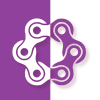Enterprise Innovation, by By Gigi Onag: ‘The future of IT is bimodal’
Companies seeking to transform into digital businesses are casting a wary eye on “bimodal IT”, a catchphrase coined last year by Gartner as a prescriptive organization model for enterprise IT.
In a nutshell, the research firm posits that most IT organizations in the near future will have two modes of operation: mode-one that is slow and characterized by the traditional waterfall approach; and mode-two that is fast, characterized by a fluid, non-sequential approach geared towards speedy time to market and quicker returns.
The type-two mode is primarily focused on the business units—the consumers of technology—and what they want to achieve in the digital world. It gives corporate IT organizations the capability to respond to the level of uncertainty and the need for agility required for a digital transformation.
“Bimodal IT is one of the most frequently asked topics in our client inquiry,” said Owen Chen, research director at Gartner. “Most companies realized that digital business is going to totally reshape the industry. If they want to capture the digital opportunities, they must build the agile capability, which means mode-two IT must be built.”
According to Gartner, the Asia Pacific and Japan is slightly ahead of the rest of world in adopting this nascent organizational model. Based on the firm’s 2014 CIO survey, 48% of the respondents from the region claimed that they already have some form of bimodal IT. The figure is higher than the global average recorded at 45%.
Different takes on the digital journey
Many local CIOs agree an agile approach to applications development and service delivery is a must-have to future-proof corporate IT.
While they accept the sound premise behind the concept, they offer varying views on how companies should evolve and transition their existing IT setup to a bimodal approach in IT.
“I believe the keys are revamping the processes, hiring the right people and a common understanding of the business objectives,” said Michael Yung, head of eproduct and technology planning at Asia Miles. “Most of the time, the tricky things are how to evolve the processes such that it is not too fast for back office systems and yet not too slow for customer-facing systems.”
Yung added that while it is difficult to estimate the cost of the transition, the “cost of not doing it will be huge. The model will likely be the company’s future. I will not be surprised if it takes a year or two to complete a proper transition.”
Meanwhile, there is no “one size fits all approach”, according to Henk ten Bos, CIO and head of the change management office at insurance company Ageas.
“There are projects for certain systems and certain processes that are best implemented using a traditional approach. And I would say probably in a very traditional environment using very traditional technology, a classic waterfall approach might still be the best approach to follow,” he said.
But he agreed that IT initiatives involving the front office are most likely to benefit from a more agile approach.
“Anything to do with mobile development, where business process, user interface, and engagement with your end customer is extremely important,” he said. “Usually it cannot be developed the best way if you use an inside-out approach.”
For ten Bos, being agile is defined by a much closer engagement with business users whether internal or external.
“You continuously engage them in the process of developing an application and you take their inputs in small intricate steps.”
He added: “Agile results in more frequent updates of your applications with incremental enhancements. If you use a very classic approach, people will have to wait maybe three, four or five months before something is implemented. This is not acceptable for mobile applications.”
Misconceptions about bimodal IT
Chen of Gartner cautioned companies from looking at the type-two mode as the only mode in the digital era and from thinking that it is more important than mode- one.
“The biggest challenge is critical skill such as agile and BRMs are hard to find and sustain. The most common pitfall is realizing that mode-two is fundamentally different from mode-one and trying to speed up mode-one to meet the requirements of agility,” he said.
For Ted Suen, head of information technology at MTR Corporation, it would be a big mistake for companies to treat mode-two as an extension of mode-one.
He pointed out that mode-one and mode-two are not two parallel streams as resources and projects of two streams have interface points. “Good management of both modes is the challenge for the CIO,” he said.
Local adoption of bimodal approach
The MTRC has been held up by Gartner as a good case study for adopting the bimodal model. The Hong Kong rail operator introduced the concept in late 2013 at its IT Strategy Planning. The focus of the agile team is around the application of emerging technologies like cloud, social, mobile and business analytics. It also focuses at enterprise architecting functions and organization transformation for better business-IT alignment.
“With our aspiration to become a value creator to the MTRC, there is a need to transform the ITSD from being reactive to being proactive in collaborating with business and advising technology solutions that are aligned to business objectives and MTRC’s corporate strategy,” Suen said.
To date, the company has spent an estimated US$1 million on its bimodal transformation over the last one and a half years. The MTRC’s mode-two team composed of 22 people, which represents about 20% of its IT staff.
Suen said there are challenges in the transition process, primarily the lack of expertise on architecting, mobile and user experience design under the mode-two approach, as well as the lack of commercial acumen and mindset change required for the IT team and business users.
But he believes that enterprise IT is inevitably moving towards a bimodal approach.
“More innovative applications are first available on the cloud. Extensive and fast cloud adoption enables mode-two projects. For example, Amazon’s revenue is doubling every two years in recent period, while the price per TB storage has come down from US$97 in 2012 to US$30 in 2014.
Furthermore, legacy ERP applications are now having cloud and mobile offerings,” Suen explained.
He added that globalization, e-commerce platforms such as Alibaba, and mobile payment capabilities have transformed the landscape of business and generate the need to more mode-two projects.
“Real-time customer engagement and analytics have become key success factors, which demand the support of mode-two IT systems” said Suen.
Another reason why bimodal IT is the future, according to Suen is that “generations X and Y in the workforce are increasingly adopting social and mobile as both their professional and personal digital platforms,” he concluded.
First published on Computerworld Hong Kong.

